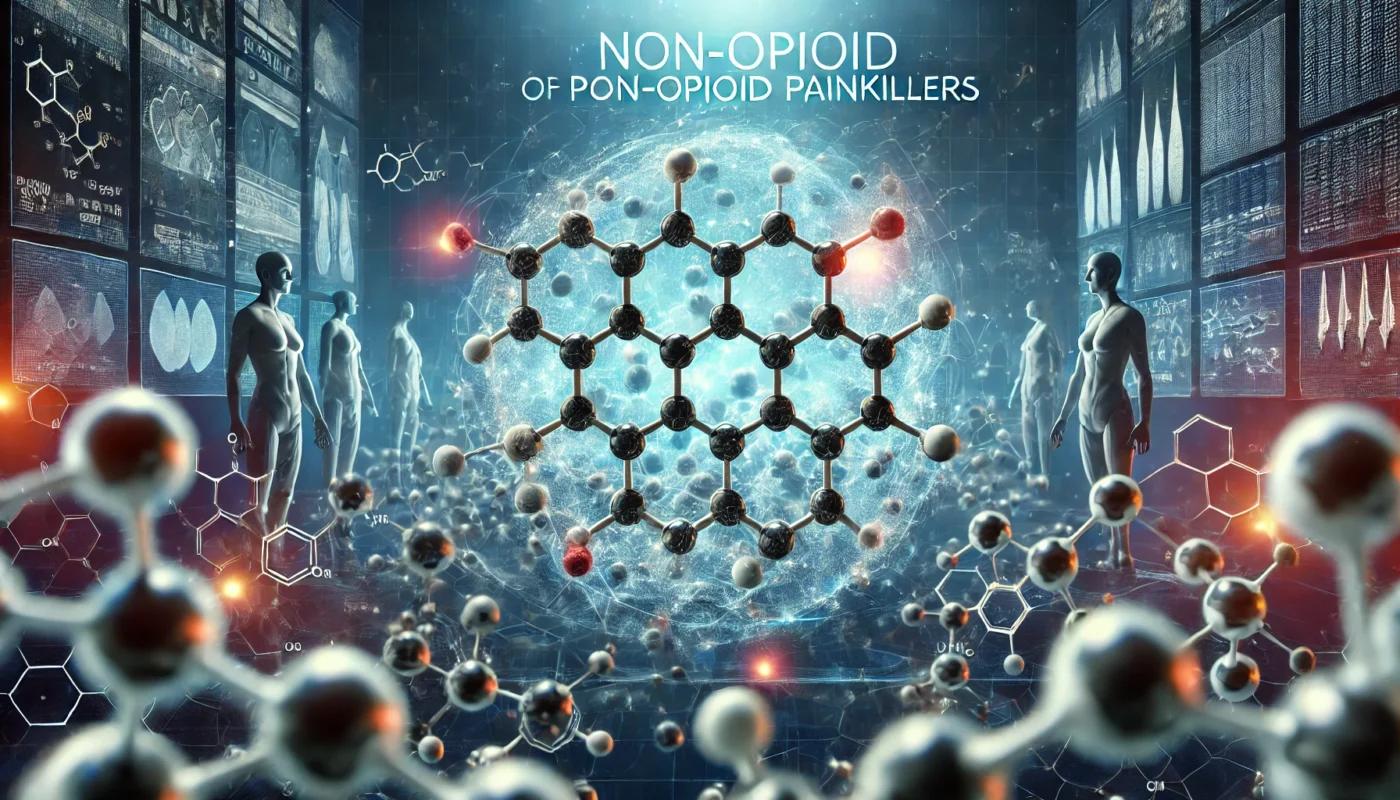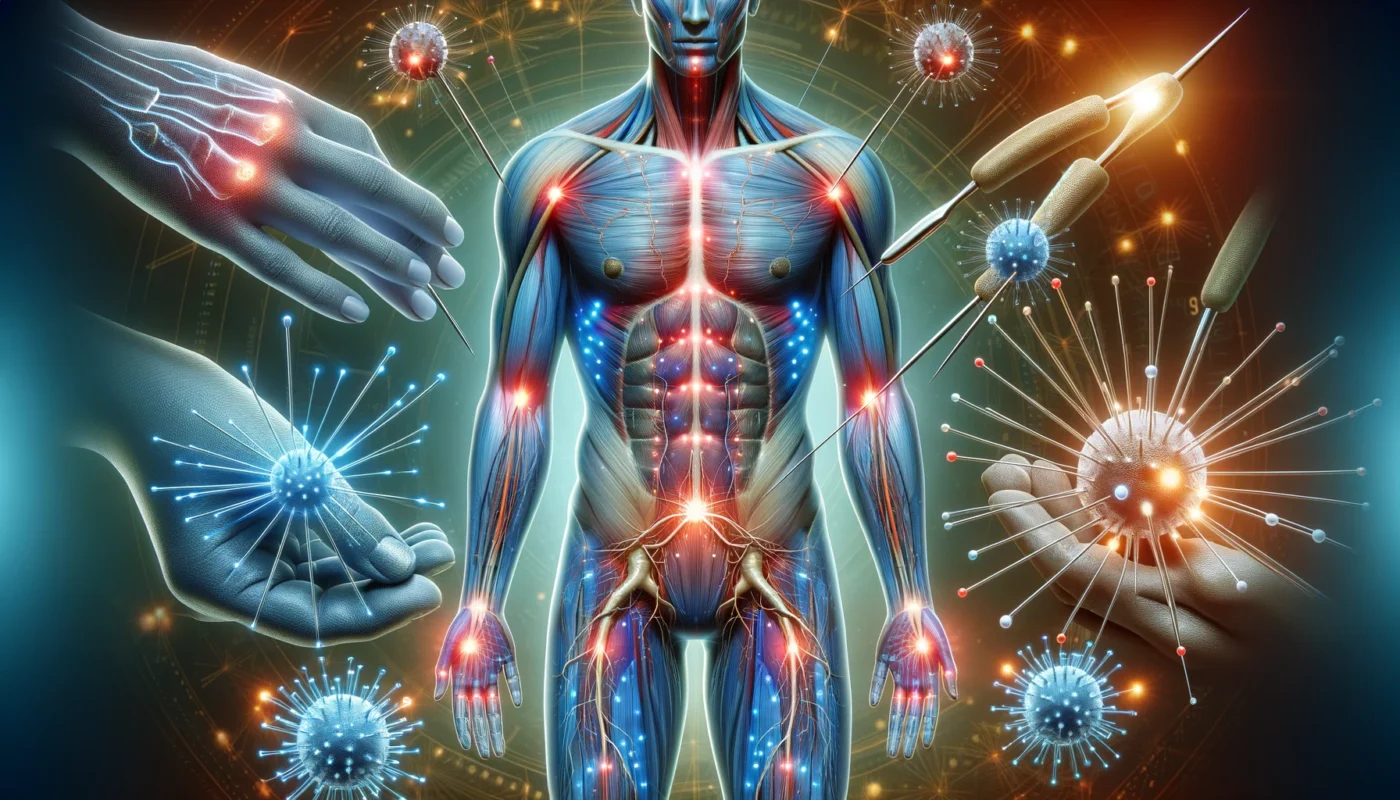Managing pain is an essential component of maintaining overall health and well-being. With the rising awareness of the risks associated with opioid medications, there has been a significant shift towards exploring non-opioid alternatives for pain management. This article delves deeply into the realm of non-opioid painkillers, offering insights into their efficacy, safety, and the myriad options available for those seeking effective pain relief without the associated risks.
You may also like: Understanding Long-Term Pain Relief Options
Understanding Non-Opioid Painkillers
Non-opioid painkillers are medications designed to alleviate pain without relying on opioids. These drugs are often regarded as safer alternatives due to their lower risk of addiction and fewer side effects. They are especially beneficial for individuals aiming to avoid the potential pitfalls associated with opioid use.
The Science Behind Non-Opioid Pain Management
The mechanisms by which non-opioid medications work are varied and complex. Unlike opioids, which primarily target specific receptors in the brain, non-opioid painkillers operate through different pathways:
- Reducing Inflammation: Many non-opioid medications target the body’s inflammatory response. By reducing inflammation, these medications can alleviate pain associated with conditions like arthritis or muscle injuries.
- Blocking Pain Signals: Some non-opioid drugs work by interfering with the transmission of pain signals to the brain. By disrupting these signals, they prevent the sensation of pain from being fully realized.
- Enhancing Natural Pain-Relief Processes: Certain non-opioid medications boost the body’s own pain-relief mechanisms. This can involve the release of endorphins or other natural chemicals that mitigate pain.
Common Non-Opioid Pain Medications
There is a diverse range of non-opioid pain medications available, each with distinct properties and uses. Some of the most commonly used include:
- Nonsteroidal Anti-Inflammatory Drugs (NSAIDs): These include ibuprofen, naproxen, and aspirin. They are effective for reducing inflammation and alleviating mild to moderate pain. NSAIDs work by inhibiting enzymes that contribute to inflammation.
- Acetaminophen (Tylenol): Known for its analgesic and antipyretic properties, acetaminophen is widely used for pain relief and fever reduction. It is often preferred for its minimal gastrointestinal side effects compared to NSAIDs.
- Antidepressants and Anticonvulsants: Certain medications in these categories, such as amitriptyline and gabapentin, have been shown to be effective for neuropathic pain. They work by modulating neurotransmitter levels in the brain.
- Corticosteroids: These are often used for their powerful anti-inflammatory effects in conditions like arthritis. Corticosteroids can be administered orally, topically, or through injections depending on the condition being treated.
- Topical Analgesics: Creams and gels containing ingredients like menthol or capsaicin provide localized pain relief without systemic effects. They are particularly useful for treating muscle and joint pain.
The Strongest Non-Opioid Pain Medications
When it comes to non-opioid pain relief, some medications are considered more potent than others. These include:
Ketorolac
Ketorolac is a potent NSAID often used for short-term management of moderate to severe pain, particularly after surgery. Its efficacy is comparable to that of some opioid medications, making it a valuable option for postoperative pain relief without the risks of addiction.
Celecoxib
Celecoxib is a COX-2 inhibitor that provides effective pain relief with a reduced risk of gastrointestinal side effects compared to traditional NSAIDs. It is often prescribed for conditions like osteoarthritis and rheumatoid arthritis.
Lidocaine Patches
Lidocaine patches are topically applied and deliver local pain relief. They are especially useful for conditions like post-herpetic neuralgia, where nerve pain persists after shingles. The patches work by numbing the affected area, providing targeted relief.
Non-Addictive Pain Relief Options
One of the primary advantages of non-opioid painkillers is their non-addictive nature. This makes them a preferred choice for individuals with a history of substance abuse or those at risk of developing dependency.

Topical Analgesics
Topical analgesics, including creams and gels, offer localized pain relief. Ingredients such as menthol or capsaicin are common, providing a cooling or warming sensation that helps alleviate discomfort. These products are ideal for managing conditions like arthritis or muscle soreness.
Physical Therapy and Exercise
Incorporating physical activity tailored to one’s condition can significantly reduce pain and improve function. Physical therapy often involves exercises that strengthen muscles, improve flexibility, and enhance mobility. This holistic approach not only alleviates pain but also addresses its underlying causes.
Mind-Body Techniques
Practices such as meditation, yoga, and biofeedback can enhance pain management by promoting relaxation and reducing stress. These techniques focus on the mind-body connection, encouraging individuals to develop a heightened awareness of their bodies and pain responses, ultimately leading to better control over discomfort.
Is Ibuprofen an Opioid?
A common question among those exploring pain management alternatives is whether ibuprofen is classified as an opioid. The answer is no. Ibuprofen is a nonsteroidal anti-inflammatory drug (NSAID) and works by inhibiting enzymes responsible for inflammation and pain. It is widely used for mild to moderate pain and is non-addictive.
Injectable Non-Opioid Pain Relief
For cases where oral medications are insufficient, injectable non-opioid options may be considered. These include:

Lidocaine Injections
Lidocaine injections are used for localized pain relief in procedures such as dental work or minor surgeries. By numbing the area of application, they provide immediate and effective pain control.
Corticosteroid Injections
These injections provide potent anti-inflammatory effects and are often used for joint pain or inflammation. Administered directly into the affected area, corticosteroid injections can offer significant relief for conditions like arthritis or bursitis.
Botulinum Toxin Injections
Known for their muscle-relaxing properties, botulinum toxin injections can help alleviate chronic pain conditions like migraines. By targeting specific muscles, these injections can reduce tension and prevent pain signals from reaching the brain.
Practical Tips for Managing Pain Without Opioids
Managing pain effectively requires a holistic approach that combines various strategies. Here are some practical tips for incorporating non-opioid pain management into your routine:
Consult a Healthcare Professional
Before starting any new medication or therapy, consult with a healthcare provider to ensure it aligns with your specific needs and medical history. A professional assessment can help tailor a pain management plan that is safe and effective.
Stay Informed
Research and stay informed about the latest developments in pain management to make well-informed decisions about your health. Understanding the benefits and limitations of different treatments empowers you to take an active role in your care.
Adopt a Healthy Lifestyle
Maintaining a balanced diet, regular exercise, and adequate sleep can significantly contribute to overall pain reduction and well-being. A healthy lifestyle supports the body’s natural pain-relief mechanisms and enhances your ability to cope with discomfort.
Explore Alternative Therapies
Consider alternative therapies such as acupuncture, chiropractic care, or massage therapy. These approaches can complement traditional pain management strategies and provide additional relief.
Conclusion
Non-opioid painkillers offer a valuable alternative for individuals seeking effective pain relief without the risks associated with opioid medications. By understanding the various options available and adopting a comprehensive approach to pain management, you can achieve better health outcomes and enhance your quality of life.

In conclusion, the shift towards non-opioid pain management reflects a growing awareness of the importance of safe and effective pain relief. Whether you’re a fitness enthusiast, a health-conscious individual, or someone managing a medical condition, non-opioid painkillers provide a viable solution for achieving optimal health and well-being. As always, consult with healthcare professionals to tailor your pain management strategy to your unique needs and circumstances.
Further Reading:
Intravenous non-opioid analgesia for peri- and postoperative pain management: a scientific review of intravenous acetaminophen and ibuprofen
Non-Opioid Painkillers, Pain Management, Nonsteroidal Anti-Inflammatory Drugs, NSAIDs, Acetaminophen, Antidepressants, Anticonvulsants, Corticosteroids, Topical Analgesics, Pain Relief, Injectable Pain Relief, Ketorolac, Celecoxib, Lidocaine, Physical Therapy, Mind-Body Techniques, Healthy Lifestyle, Alternative Therapies, Chronic Pain, Health and Well-being
Important Note: The information contained in this article is for general informational purposes only, and should not be construed as health or medical advice, nor is it intended to diagnose, prevent, treat, or cure any disease or health condition. Before embarking on any diet, fitness regimen, or program of nutritional supplementation, it is advisable to consult your healthcare professional in order to determine its safety and probable efficacy in terms of your individual state of health.
Regarding Nutritional Supplements Or Other Non-Prescription Health Products: If any nutritional supplements or other non-prescription health products are mentioned in the foregoing article, any claims or statements made about them have not been evaluated by the U.S. Food and Drug Administration, and such nutritional supplements or other health products are not intended to diagnose, treat, cure, or prevent any disease.

